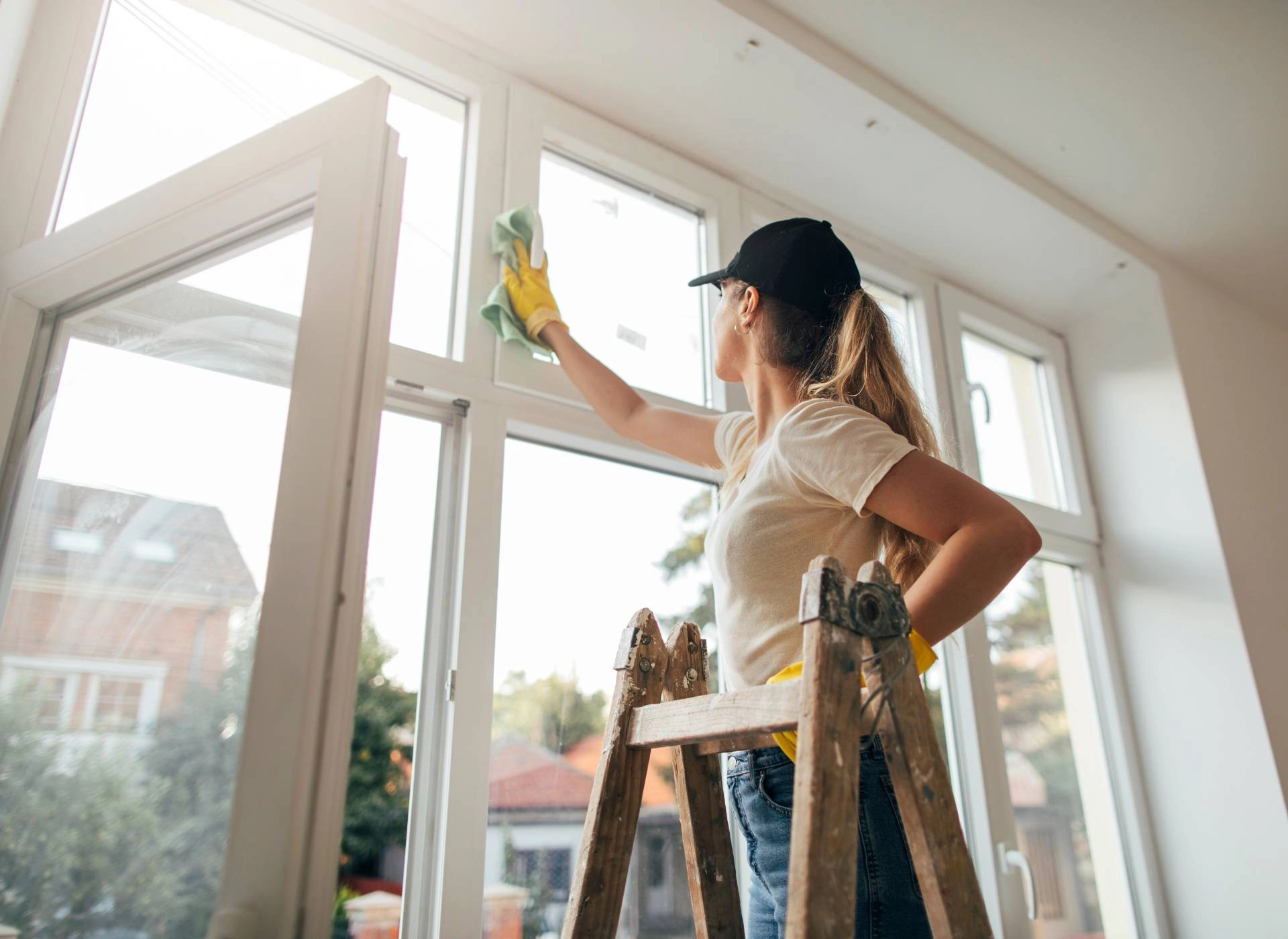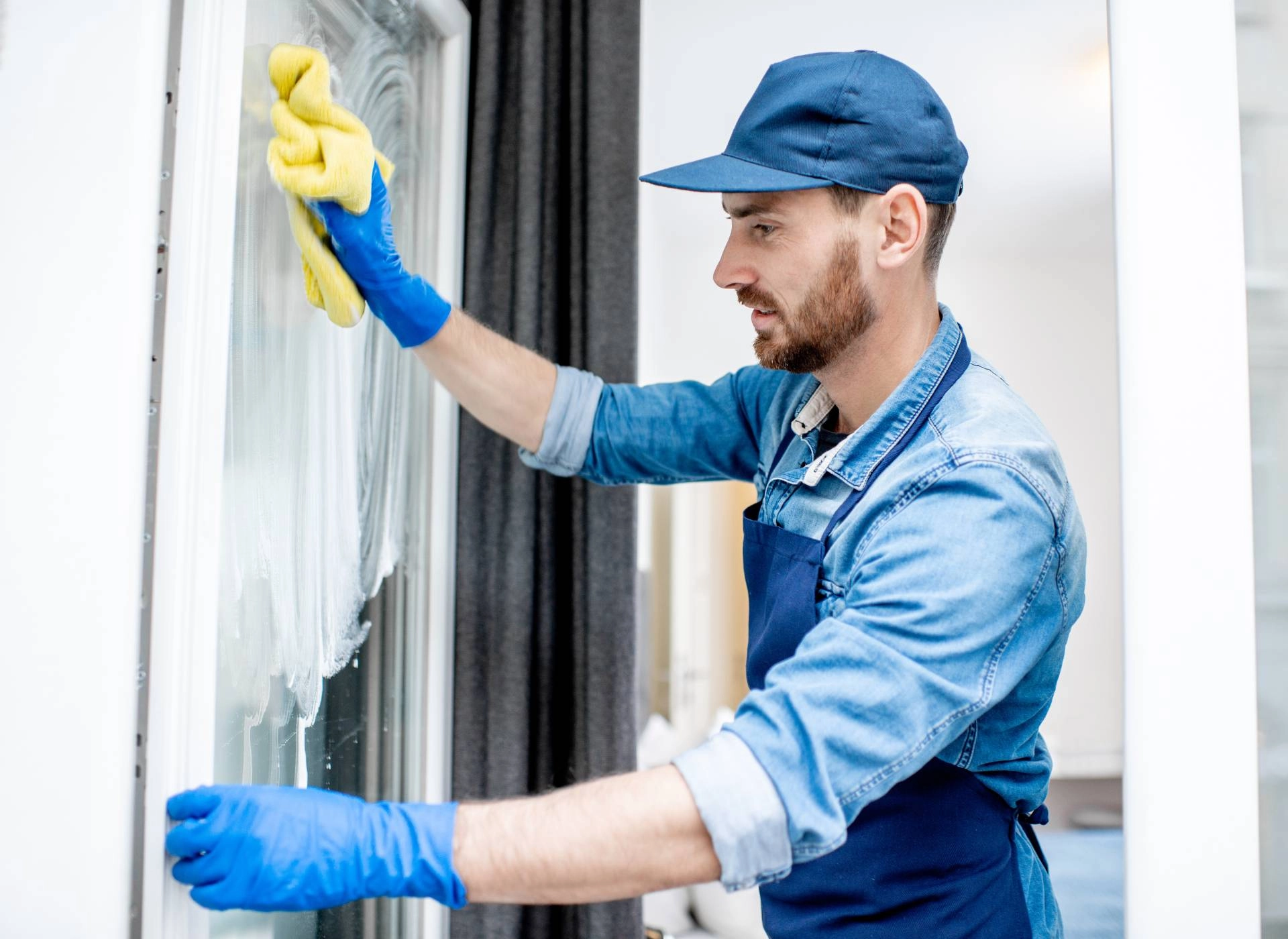
Regular cleaning and maintenance of PVC windows is not only a matter of aesthetics, but also functionality. Properly maintained windows can last for many years, retaining their insulating and protective properties.
In this guide, you will learn how to effectively clean and maintain your PVC windows and how to regularly check their condition to detect any damage, even before it starts to significantly affect the ergonomics of your window. Follow step by step to enjoy the beauty and functionality of your windows.
Cleaning and maintenance of PVC windows
Caring for PVC windows requires regular cleaning and proper maintenance to ensure their long-lasting performance and aesthetic appearance. Check out our comprehensive step-by-step guide explaining how to effectively care for these elements of your home.
PVC window cleaning
Choosing the right cleaning products
It is best to use mild, non-corrosive detergents to clean PVC windows. Avoid using aggressive chemicals (e.g. acetone or solvents), which can damage the surface of the window frames. Soap solutions or special agents designed for PVC are ideal.
Cleaning technique
Start by removing dust and dirt with a soft, dry cloth or brush. Then wash the window frames with warm water and detergent of your choice, using a soft sponge or cloth. Always wash from the tops to the bottoms of the window to avoid dirty water running down the already washed areas.
Window cleaning
Clean your windows using dedicated glass cleaner or a vinegar and water solution. This will ensure they are crystal clear without streaks. Use a squeegee to wipe, then polish the glass with a soft, dry cloth.
Drying
After washing, wipe the frames and windows thoroughly using a dry, clean cloth. This will avoid leaving streaks and water stains.
Maintenance of PVC windows
Seal maintenance
The seals on PVC windows provide thermal and acoustic insulation. To keep them in good condition, regularly clean these components from dust and dirt. You can use technical petroleum jelly or special care products to prevent the seals from drying out and cracking.
Maintenance of window hardware
Window fittings need regular lubrication. Use a special oil or other lubricant designed for fittings. Apply the lubricant carefully, avoiding excess that could attract dirt.
Checking and adjusting fittings
Regularly check that all components are working properly. If you notice that the window is struggling to open or close, this may indicate a need for adjustment. If this is the case, you can use a professional or, if you have the necessary knowledge, adjust the mechanisms yourself.
Checking the condition of window joinery
Regularly inspect the condition of your window frames for cracks, scratches or other damage. Small cracks can be repaired yourself using special sealants designed for PVC.
Remember that systematic cleaning and maintenance of your uPVC windows are essential for their proper functioning and aesthetic appearance. Doing this regularly will ensure that your windows will serve you effectively for many years.

How to check the condition of PVC window joinery?
Regular washing and maintenance is not enough. You also need to know what aspects to look out for during these activities. Here are some practical tips to help you assess the condition of your uPVC windows. Is it time to have your windows repaired?
1. Checking the seals
The seals on PVC windows can degrade over time. Check them at least once a year for cracks, damage or signs of wear. If the seals are hard or cracked, they should be replaced to still provide adequate insulation and protection from draughts.
2. check of frames and glass
Regularly inspect window frames and glazing, looking for cracks, nicks or other damage. Also check for signs of moisture between the panes for double-glazed windows. If you observe condensation inside your window, this may indicate a damaged vacuum seal.
3. Functionality of the fittings
Test regularly how your window fittings work. Open and close your windows to check that the mechanisms work smoothly. If you notice that the window is stalling or resisting, it’s a good idea to lubricate and adjust all the mechanisms.
4. Leakage test
To test the tightness of your windows, you can carry out a simple test using a thin sheet of paper. Place the piece of paper between the frame and the window and then close the window. If the paper slides out easily without resistance, this may indicate that the seal is insufficient. In such cases, once again pay attention to the condition of the seals, the degree of window closing and the operation of the mechanisms. Most likely, one of these issues will be the cause of insufficient tightness.


















